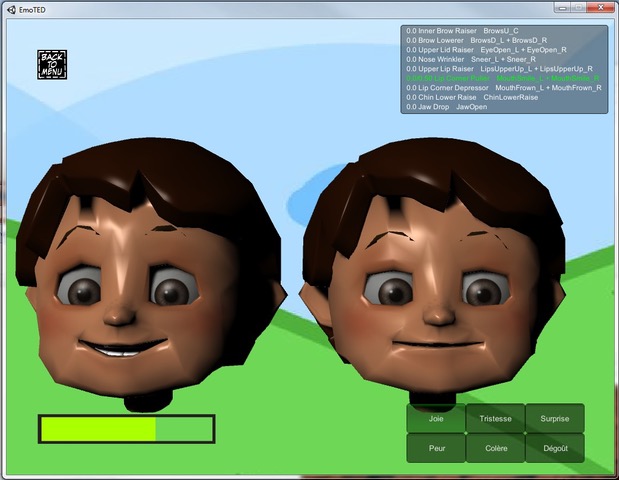Designing a VR environment supporting the learning of emotions mimicry for children with ASD (EmoTED)
Date: 09/2015 - 09/2016
Funding: Collectivités Lavaloises
Call:
URL: https://lium.univ-lemans.fr/en/emoted/
LIUM Participant(s): |  Pierre Laforcade Pierre Laforcade |

 Français
Français

